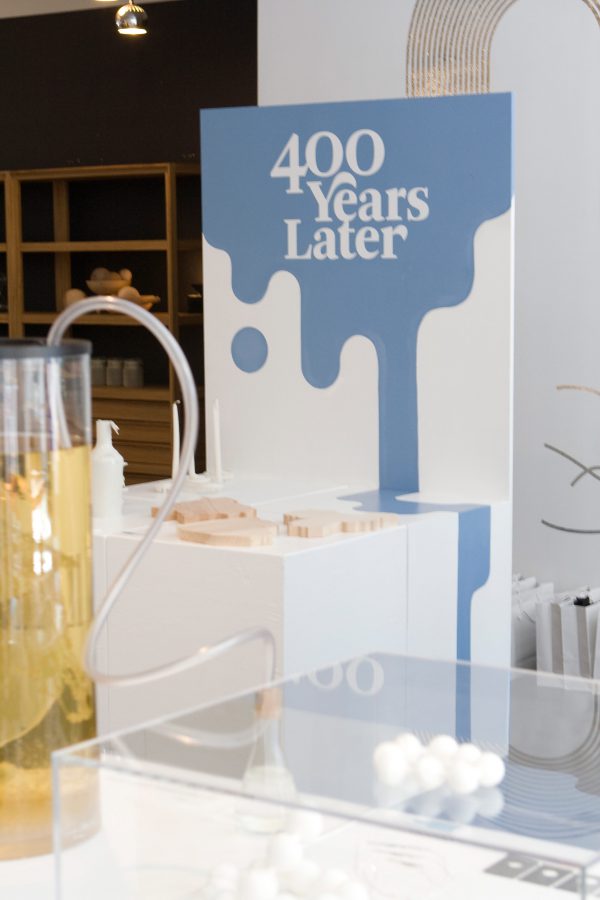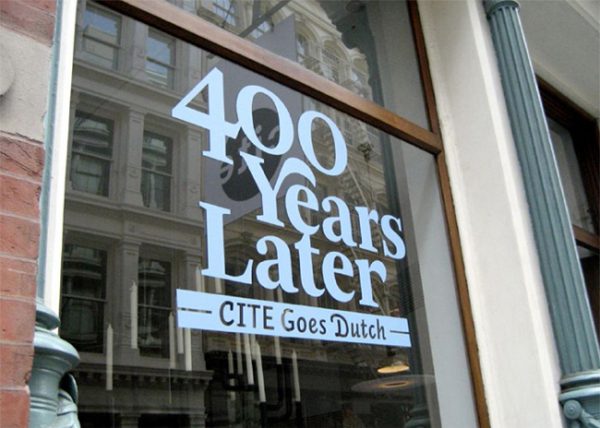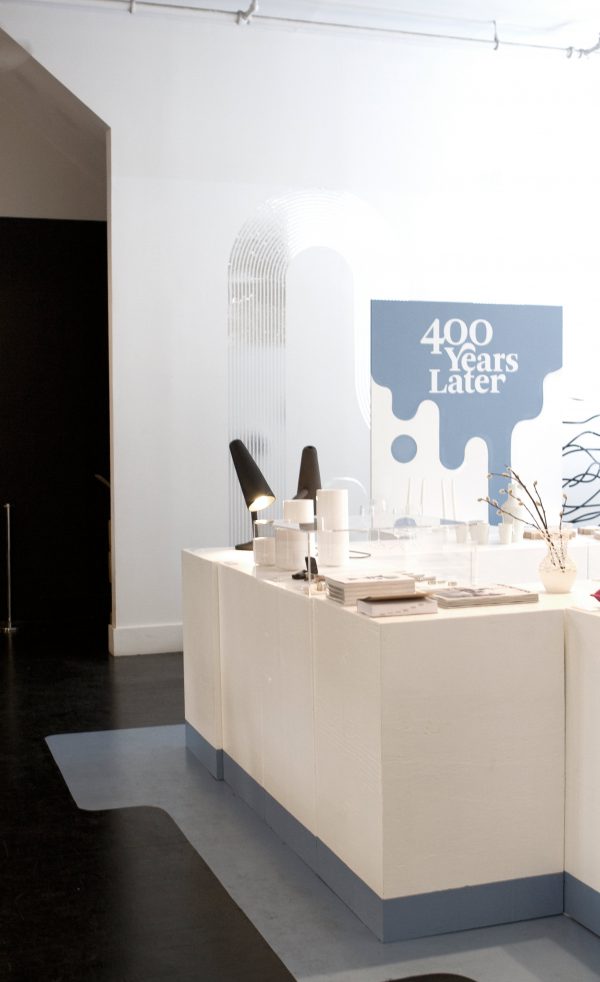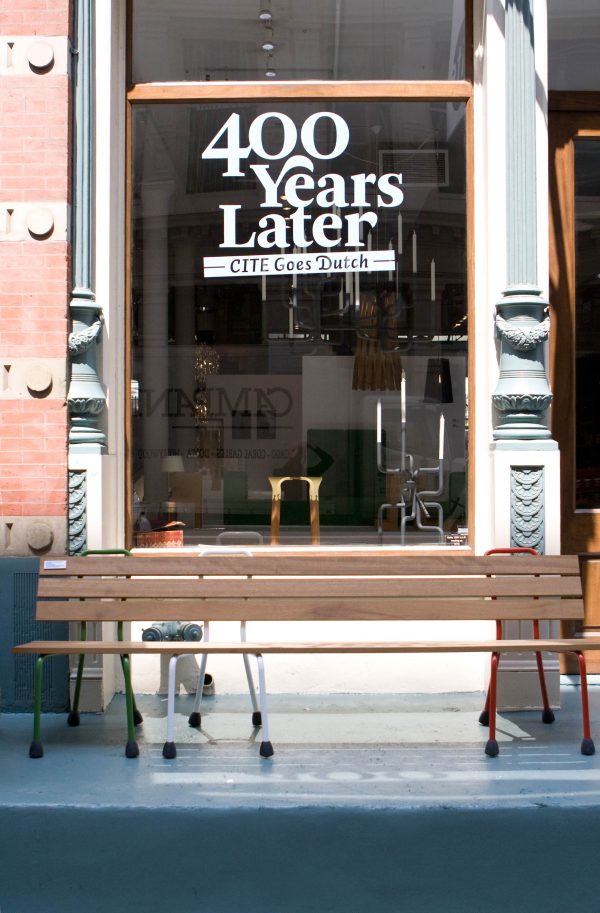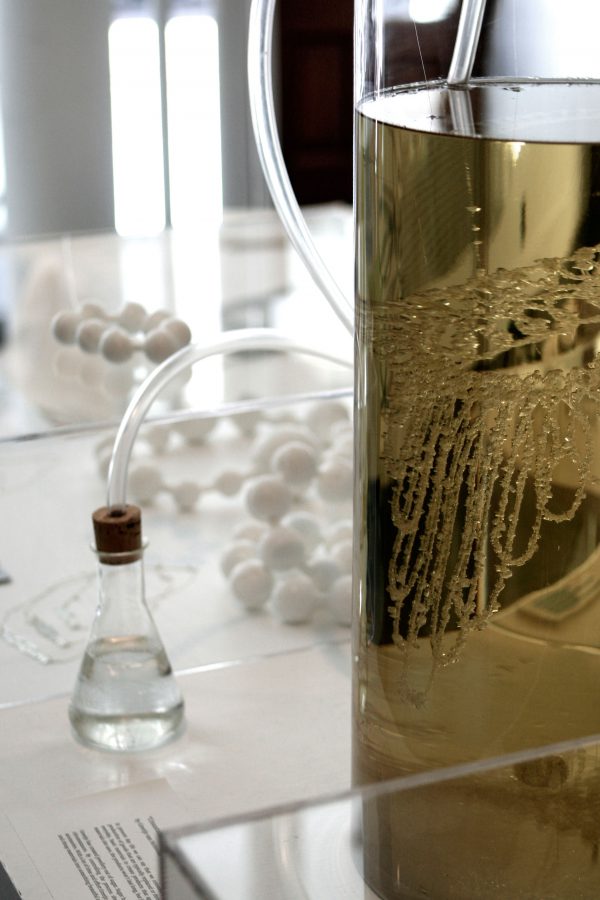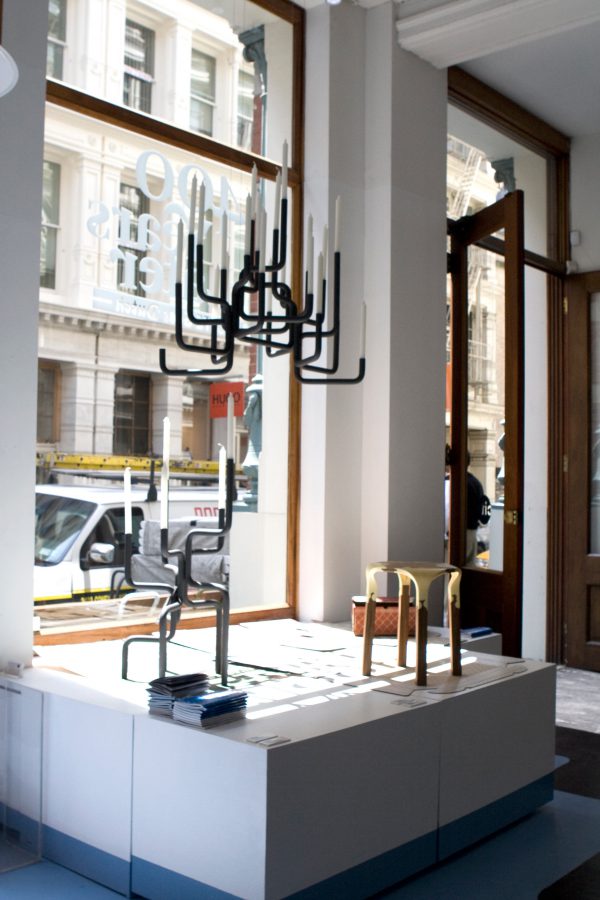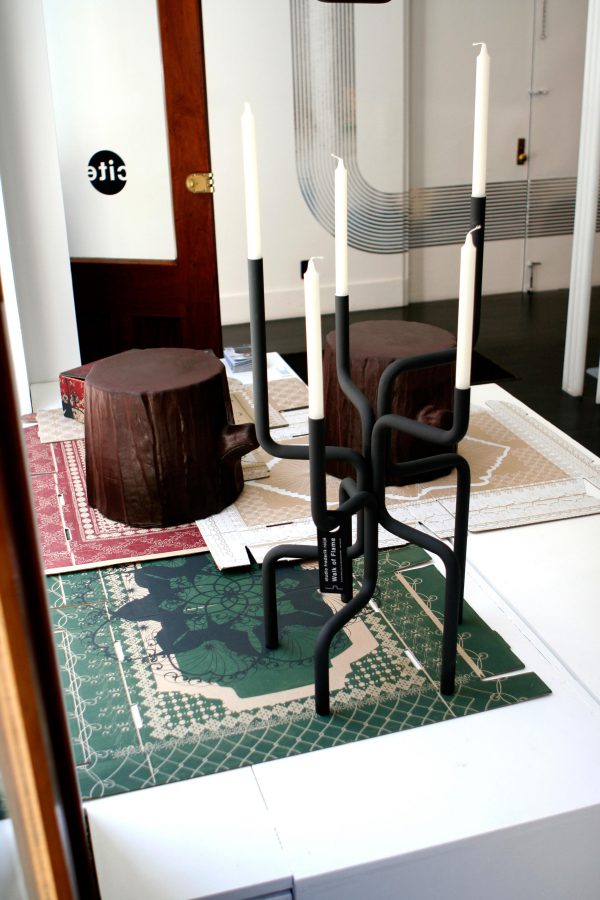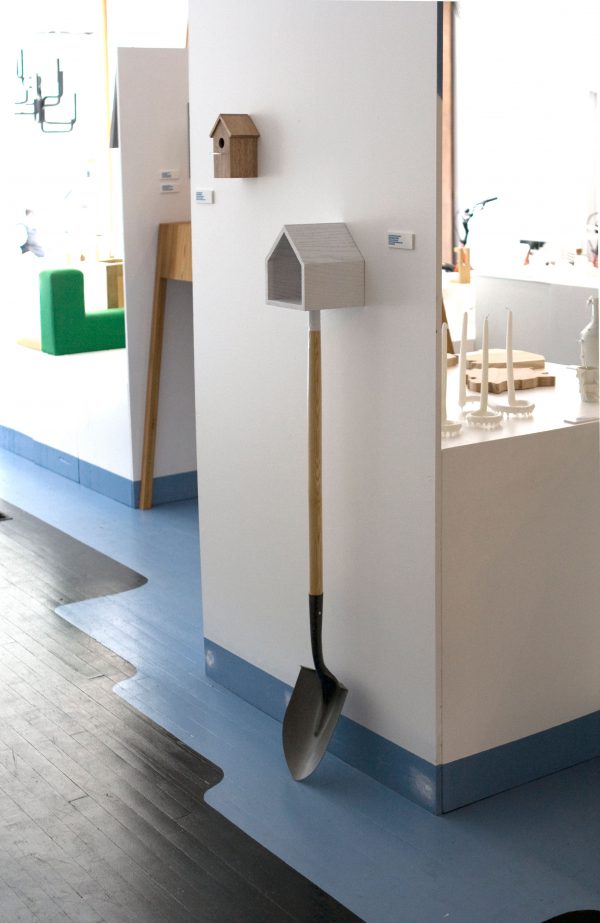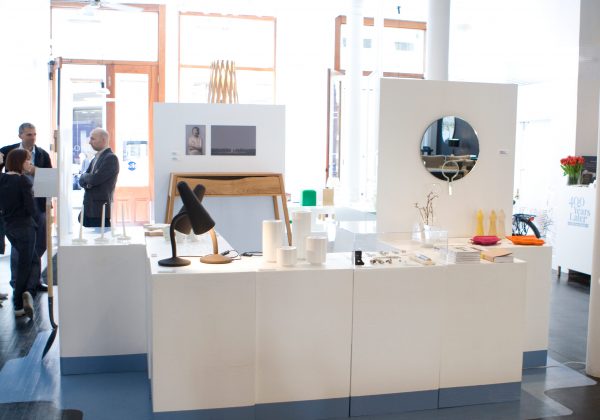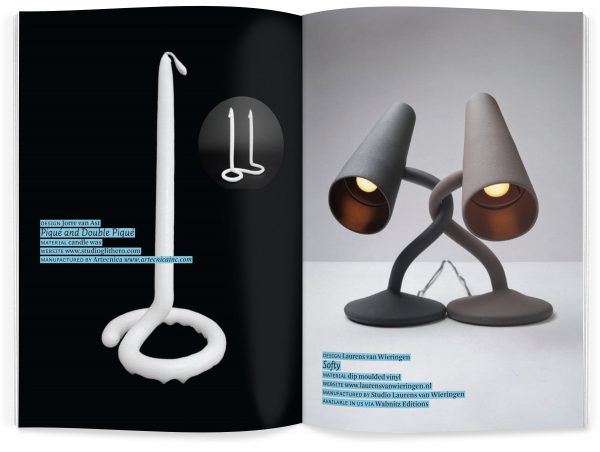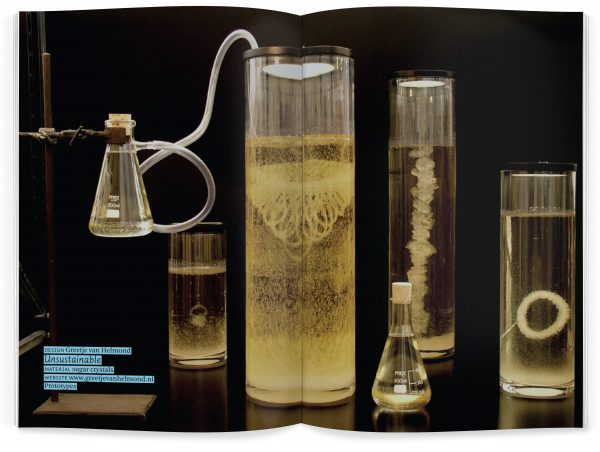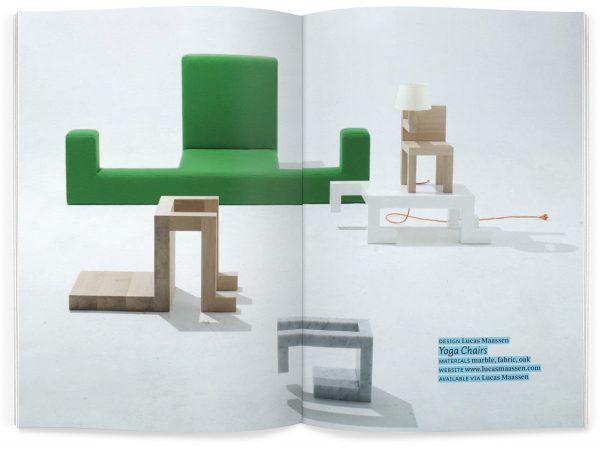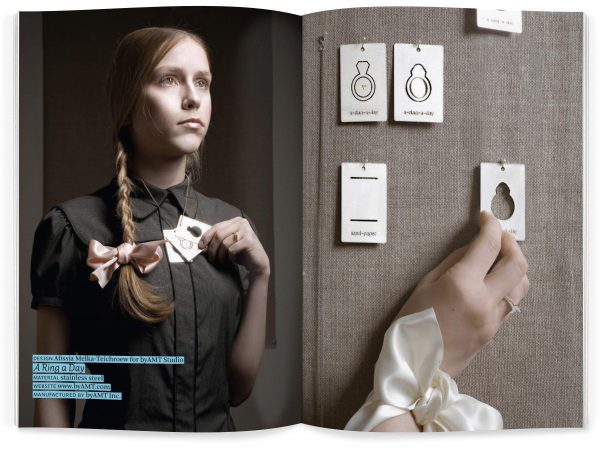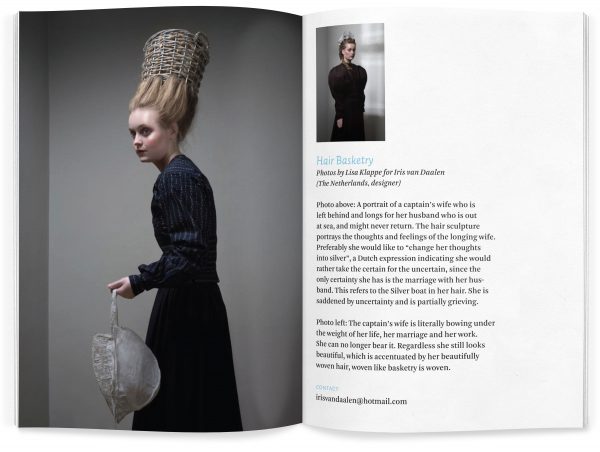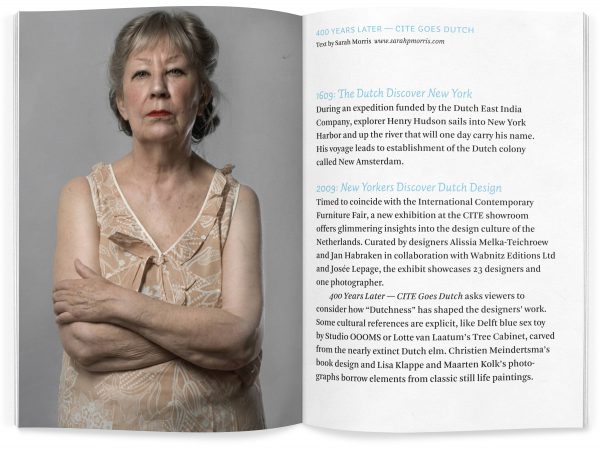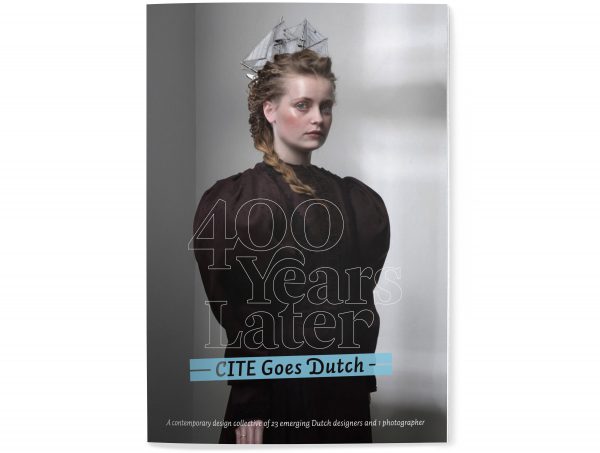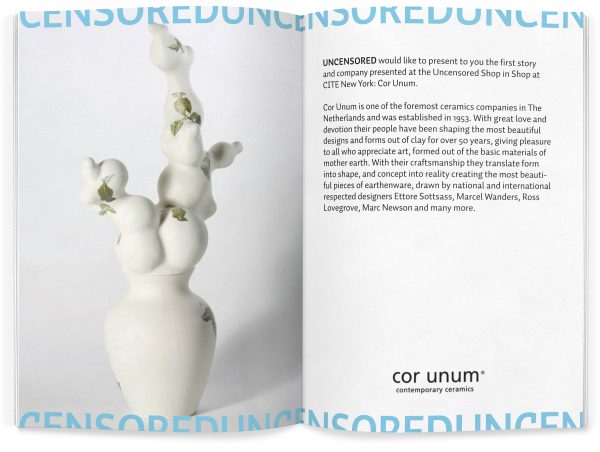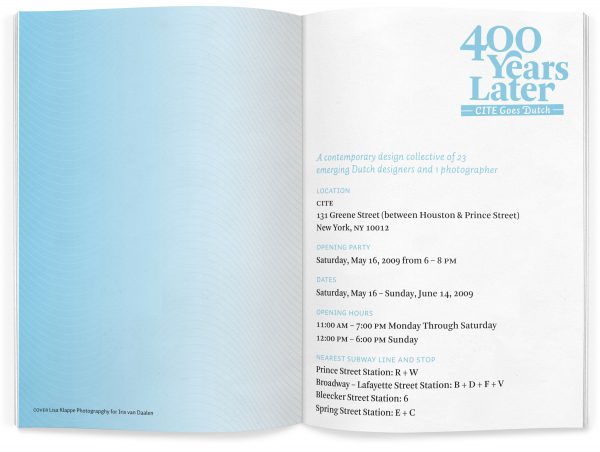400 Years Later, CITE Goes Dutch
400 Years Later, CITE Goes Dutch, was a satellite ICFF exhibition, in New York, which surveyed Dutch furniture and product design and painted a portrait of The Netherlands as a designed and designing nation.
1609: The Dutch Discover New York
During an expedition funded by the Dutch East India Company, explorer Henry Hudson sails into New York Harbor and up the river that will one day carry his name. His voyage leads to establishment of the Dutch colony called New Amsterdam.
2009: New Yorkers Discover Dutch Design
Timed to coincide with the International Contemporary Furniture Fair, a new exhibition at the CITE showroom offers glimmering insights into the design culture of the Netherlands. Curated by designers Alissia Melka- Teichroew and Jan Habraken in collaboration with Wabnitz Editions, the exhibit showcases 23 designers and one photographer.
“400 Years Later – Cite Goes Dutch” asks viewers to consider how “Dutchness” has shaped the designers’ work. Some cultural references are explicit, like Delft blue sex toy by Studio OOMS or Lotte van Laatum’s Tree Cabinet, carved from the nearly extinct Dutch elm. Christien Meindertsma’s book design and Lisa Klappe and Maarten Kolk’s photographs borrow elements from classic still life paintings.
Other allusions are more elliptical. The water surrounding–and perpetually threatening–the low-lying country may have inspired Anouk Omlo’s Primal Water sculpture. Traces of the region’s moody weather and grey skies can be seen in Klappe’s enigmatic photographs. The country’s historic porcelain industry appears in many guises: in Laurens van Wieringen’s Crack Series and Lara de Greef’s High Heeled Service
The designers also explore and spoof stereotypical Dutch characteristics. Works by Frederik Roije, Sander Mulder, Dave Keune, Anthony Duffeleer, and Lucas Maassen reference the simplicity of traditional Dutch craftsmanship and the austerity of Dutch Protestantism. Joine Studio, byAMT Studio, Mirjam van der Lubbe, Greetje van Helmond, Alexander Pelikan, Studio Glithero, and Jan Habraken exhibit the sly humor that underlies the austerity.
Many, many of the works demonstrate the ingenuity and no-nonsense approach to problem solving that made the Netherlands a world superpower 400 years ago. Susan Verheijen’s Formmatic, Ilona Huvenaars & Willem Derks’s Knitted Vase, WND’s Message in a Box, and Jorre van Ast’s Clampology are just four examples.
Whether intricate or pared down, pragmatic or poetic, the works of “400 Years Later – CITE Goes Dutch” demonstrate that when it comes to design, artistic vision, and craftsmanship, the Netherlands remains a superpower.
Because the curators want to encourage visitors to take a part of the Dutch experience home with them, much of the work selected for show will be available for purchase
In order to further contextualize the portrait of the Netherlands painted by the products on show, the curators will also include Lisa Klappe’s photography, offering a more literal depiction of the country and its people. The prints will offer an enlightening contrast to the objects, presenting a more cohesive experience of the work instead of mere products on pedestals.
Participating Designers
Studio Oooms, Frederik Roijé, Jorre van Ast, Dave Keune, Mirjam van der Lubbe, Studio Glithero, Ilona Huvenaars, Willem Derks, Sander Mulder, Lotte van Laatum, Niels van Eijk, Maarten Baptist, Susan Verheijen, Alexander Pelikan, Laurens van Wieringen, Wendy Plomp, Maarten Kolk, Christien Meinderstma, Anouk Omlo, Greetje van Helmond, Lucas Maassen, Anthony Duffeleer, Martijn Deurloo, Studio Jan Habraken and Alissia Melka-Teichroew for byAMT Inc.
Participating Companies: Kikkerland, Van Esch, Functionals.eu, Royal VKB, Artecnica, Wabnitz Editions Ltd.
Dates: Saturday, May 16 – Sunday, June 14, 2009
Client
Cite and Dutch Culture USA


